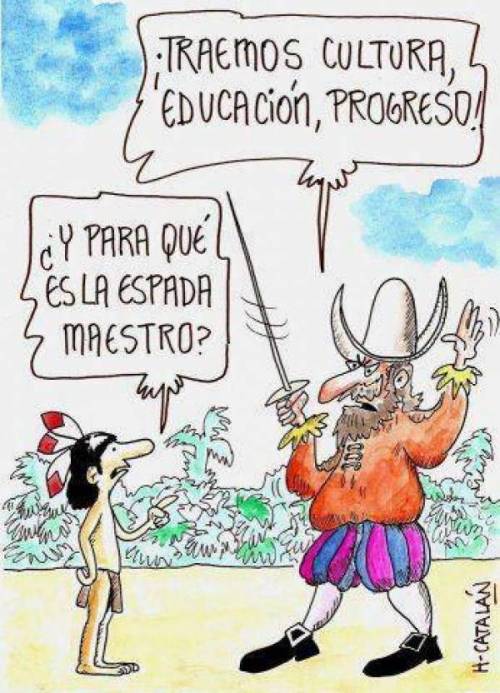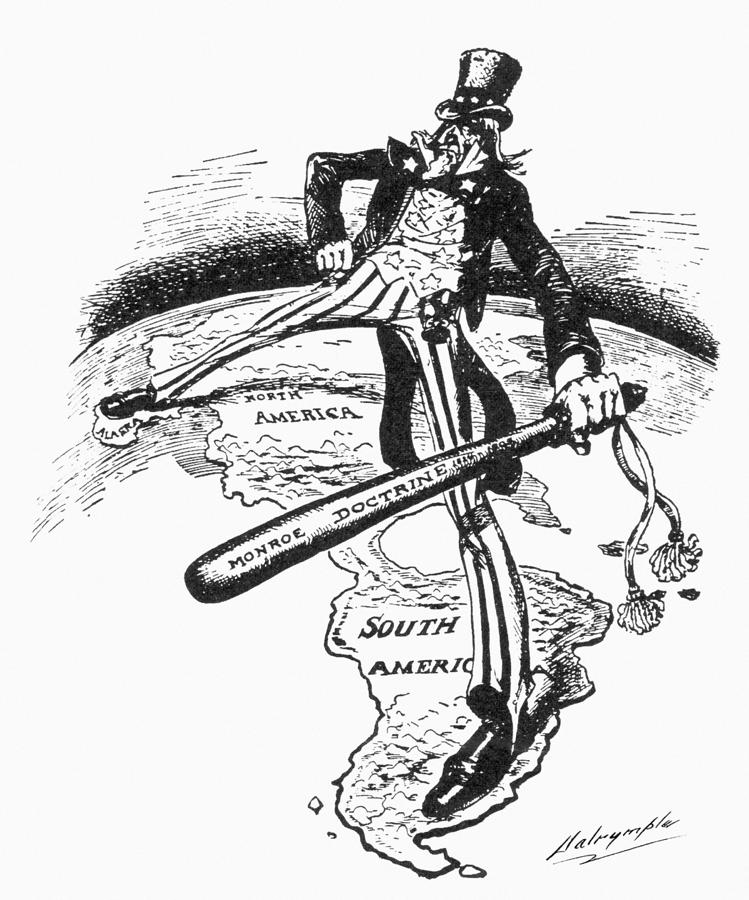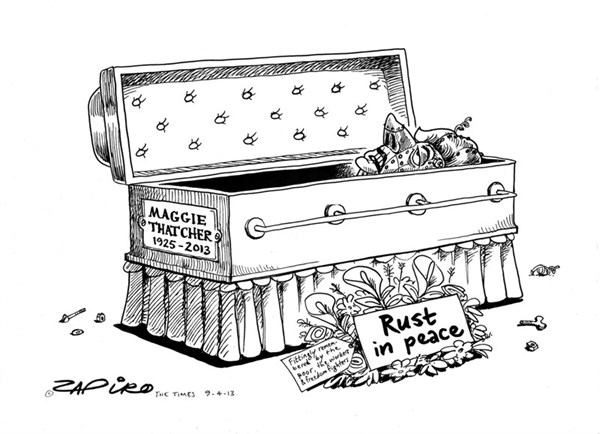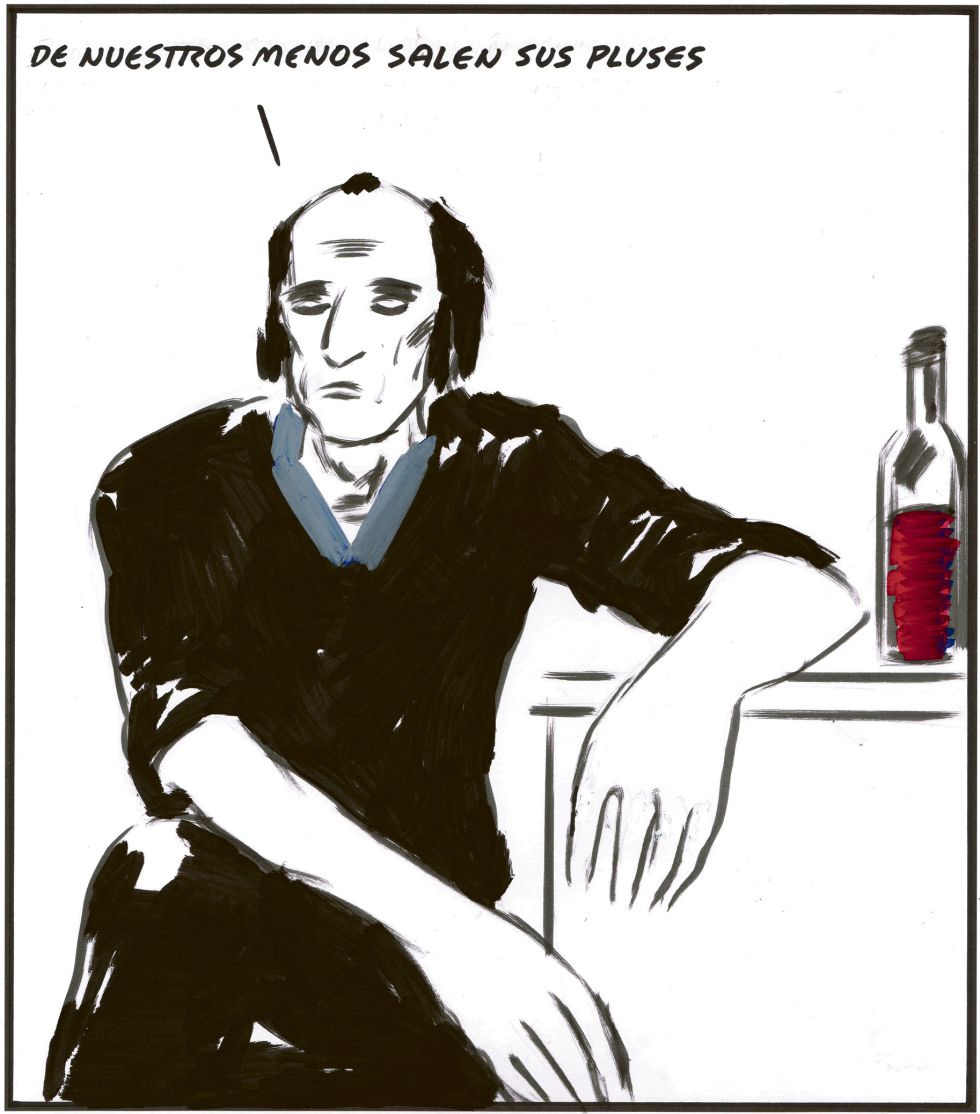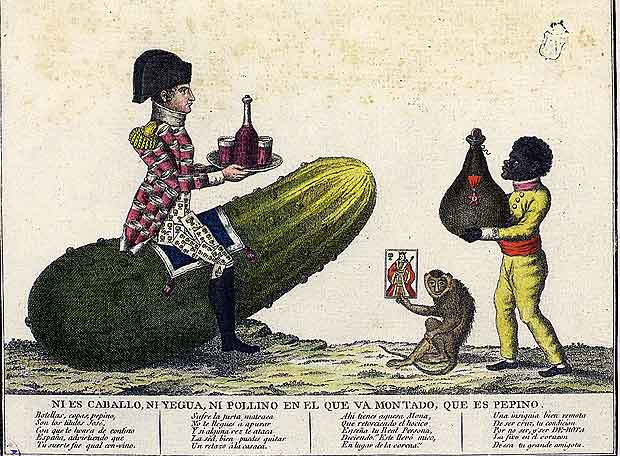This is the presentation for this part of the unit. As you know, today is the 12th of October, the day Christopher Columbus and his crew arrived in the Bahama Islands and were the first Europeans to communicate their "discovery". This was the beginning of the occupation and exploitation of the Indies. Here you have a small text by Uruguayan writer Eduardo Galeano to think about the "discovery" of America:
Did Christopher Columbus discover America in 1492? Or was it the Vikings before him? And before the Vikings, what about the people who lived there? Didn’t they exist?
Official history relates that Vasco Núñez of Balboa was the first man who saw both oceans, standing on a peak in Panama. Were the inhabitants of that area blind?
Who gave maize and potatoes and tomatoes and chocolate and the rivers and mountains of America their names? Hernán Cortés? Francisco Pizarro? Were the people who were already living there mute?
We have been told, and still are, that it was the pilgrims of the Mayflower that populated America. Had it been empty before?
Because Columbus didn’t understand what the Indians were saying, he concluded that they didn’t know how to speak. Because they wore no clothes, were gentle, and gave away everything they had, he concluded they lacked the capacity for reason. And because he was certain of having discovered the Orient by the back door, he believed they were Indians from India.
Afterwards, during the second voyage, the admiral promulgated an act establishing that Cuba was part of Asia. The document of June 14, 1494, stated as evidence that the crew of the three ships recognized it as such. Whoever said otherwise was given thirty lashes, fined 10,000 maravedíes, and had his tongue cut out.
The notary, Hernán Pérez de Luna, attested, and the sailors who could write signed at the bottom.
The conquistadors demanded that America be something it wasn’t. And they treated the Americans as if they were what they imagined the pagans of the Orient to be.
Christopher Columbus said he saw on the shores of Cuba sirens with men’s faces and chicken feathers, and supposed that not far from there men and women had tails.
In Guyana, according to Sir Walter Raleigh, there were people with eyes in their shoulders and mouths in their chests.
In Venezuela, according to Pedro Simon, there were Indians with ears so long they dragged on the ground.
In the Amazon, according to Christopher of Acuña, the natives’ feet were shaped backwards, heels forward and toes behind, and according to Pedro Martín de Anglería, women mutilated one breast to be able to fire their arrows better.
Anglería, who wrote the first history of America, though he never set foot there, also affirmed that in the New World there were people with tails, and these tails were so long the natives could sit only in chairs with holes.
The Black Code prohibited the torture of slaves in the French colonies. But it wasn’t to torture them but to educate them that slaves’ masters whipped their backs and cut their tendons when they fled.
The Laws of the Indians, which protected those in the Spanish colonies, were quite moving. But the gallows and pillory set up in the center of every Main Square were even more affecting.
The reading of the Request for Obedience was very convincing. This occurred on the eve of the assault on each village. It explained to the Indians that God had come to the world and left St. Peter in his place, and that the successor of St. Peter was the Holy Father, and that the Holy Father has shown favor on the Queen of Castilla, who rules all this land. For this reason, they should go from here or pay tribute in gold, and if they don’t or if they stay, war would be declared on them, and they would be made slaves along with their wives and children. But the Request was read in the middle of the night from the mountain in Spanish and without an interpreter, in the presence of the notary but no Indians, as they were asleep, miles away, and hadn’t the faintest idea what was awaiting them.
Until not long ago, October 12 was Race Day.
But does such a thing even exist? What is race but a useful lie to exploit and exterminate one’s neighbor?
When the U.S. entered the Second World War, the American Red Cross decided that the blood of black people would not be accepted in its blood banks. Has anyone seen, by chance, black blood?
Afterward, Race Day became the Day of Encounter.
Were colonial invasions encounters, whether those of yesterday or those of today? Shouldn’t they be called rapes or violations instead?
Perhaps the most revealing episode in the history of the Americas occurred in 1563 in Chile. Indians besieged the fortress of Arauco, depriving the Spanish of food and water, yet Captain Bernal refused to surrender.
From the stockade he screamed out, “There will be more and more of us!”
“With what women will you make them?” the Indian chief asked.
“With yours. We will make them bear children who will be your masters.”
The invaders called the original Americans idolaters because they believed that nature is sacred and that we are the brothers and sisters of all those with feet, paws, wings, or roots.
And they called them savages. But they were not wrong about this. The Indians were such savages that they ignored the fact that they had to obtain a visa, a certificate of good behavior, and a work permit from Columbus, Cabral, Cortés, Alvarado, Pizarro, and the pilgrims of the Mayflower.
Here you have the text in Spanish:
